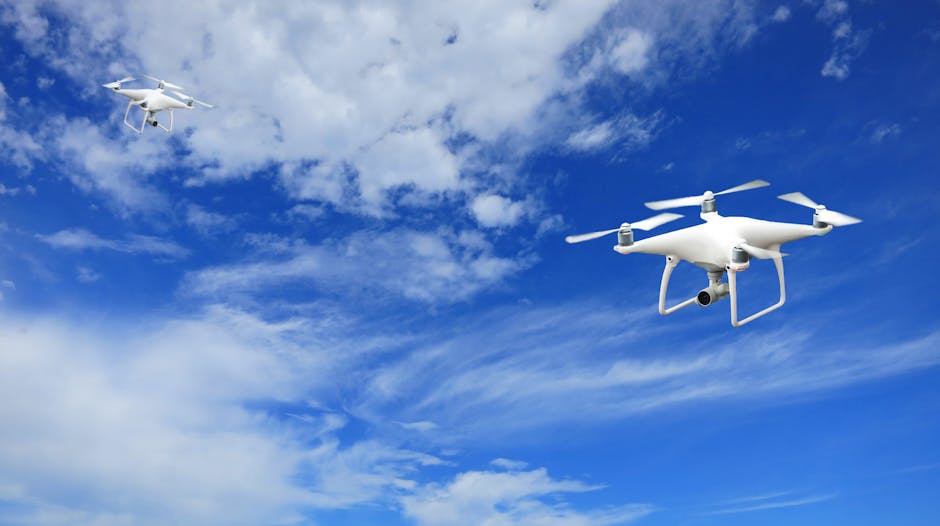Drone flying is a modern art form – as you gain more experience in drone operation, you’ll see firsthand the techniques that work and the ones that don’t. But even if you’re an expert at drone flight in temperate climates, you may find that flying drones in cold weather is a completely different beast.
But don’t worry: We’ve collected some tried-and-tested tricks that will help you achieve the best possible results when flying your drones in even the most frigid conditions.
Challenges When Flying Drones in Cold Weather
According to dummies.com, “It’s the days that are freezing, precipitating, or extremely windy that are particularly troublesome,” in regards to drone flying. Thus, conditions that are both cold and snowy are doubly problematic.
To give you a leg up as you prepare for your cold weather flight, we’ll start with simple cold weather challenges and solutions before moving on to the additional obstacles you may face in below-freezing temperatures when precipitation is present. Finally, we’ll share some amazing tips for a successful drone flight in cold weather.
How cold are we talking? For the purposes of this guide, we’re referring to quadcopter operation at temperatures of 32 degrees Fahrenheit or below, since most drone models are designed for use in temperatures ranging from about 32° – 104° Fahrenheit.
1 Reduced Battery Life
The majority of drones operate under the power of Lithium Polymer (Lipo) batteries, which are known to generate less power in cold temperatures. And, as most seasoned drone operators know firsthand, a reduced battery life equates shorter flight times and a shorter battery lifespan overall.
Depending on the size of your drone’s battery and the exact temperature, you may only get about half the expected flight time in cold weather conditions. Total battery failure has been reported in extreme cases.
2 Increased Chance of Operator Error
Even if you’re a seasoned drone operator, you may not perform at your best in cold weather. Freezing hands and fingers can slow your response time, and you’re more prone to error when you have reduced control of your hands.
3 Less Responsive and/or Malfunctioning Drones
Some users have reported malfunctioning drone sensors during cold-weather operation, leading to drifting or wobbly flights. Temperatures below 32 degrees can also cause gimbals and navigation sensors to completely freeze up.
6 Tips for Flying Drones in Cold Weather
 Source: Pexels
Source: Pexels
Fortunately, drone operators from across the globe have a lot to say when it comes to drone operation in cold environments. Here are our favorite tips for achieving the best results when flying at temperatures below 32 degrees.
1 Follow User Manual Instructions
All drone models are distinct, and some can handle wet and cold weather better than their peers. Prior to taking off on a cold day, make sure you completely understand the possible limitations of your quadcopter as well as its gimbal, battery, and other components. Your drone’s user manual provides extensive information on the ideal operating conditions necessary for top performance in all weather conditions.
2 Learn and Prioritize Battery Best Practices
Since the biggest pitfall associated with cold weather drone flight is reduced battery life, make battery care a top priority. Consider bringing along extra batteries or a portable charger in case of a sudden loss of power.
During the flight, keep an eye on battery temperature and capacity. You can typically check battery numbers on the controller or within the drone’s mobile app. Don’t attempt a fast ascent until your battery reaches a temperature of over 59 degrees Fahrenheit. And make sure to come in for an immediate landing if the battery goes below 3.2 volts, in order to avoid a crash.
Proper storage is also an important aspect of battery life, and keeping batteries warm starts even before you leave the house. At home, make sure that batteries are stored in an area that’s cool (not cold) and dry. Jake Carter at RC Hobby Review additionally recommends that you keep batteries fully charged during storage.
When you’re packing up your drone flight gear prior to a cold-weather flight, wrap batteries in a scarf, glove, or similar protective clothing layer. Further, it’s a good idea to keep both your drone and batteries in your vehicle’s cab rather than the trunk if at all possible.
3
Accessorize!
As previously mentioned, cold fingers can lead to operator error, so keep those digits protected when cold weather strikes. Thick gloves can be cumbersome, so many drone pilots use transmitter gloves when operating their drones in cold weather conditions.
Available in several different styles at a variety of price points, transmitter gloves provide the perfect solution to stiff, frigid hands in cold weather by keeping your fingers free yet protected. If you’re turned off by the bulky nature of transmitter gloves, try out a combination of thin, fingerless gloves stuffed with hand warmers.
Along with transmitter gloves, another great cold weather drone flight accessory is a portable battery charger. By having a charger on-hand in case of a sudden loss of power or for those times when you forgot to keep your batteries fully charged, you won’t have to head home early from your cold-weather drone flight.
4
Watch the Altitude
Another consideration in cold weather is the elevation of your liftoff site. If you’re flying at sea level or close to it, altitude won’t factor into how you fly your drone at any temperature. But the further you ascend in altitude, the higher the chance of drone malfunction.
That’s because changes in altitude affect both air density and air pressure. Air is thinner at high elevations, and there is less wind resistance, meaning that your drone propellers will have to spin faster to maintain height.
Many drone pilots in high-altitude areas recommend gimbal upgrades and a more gradual descent than you may be accustomed to at sea level. If your drone’s default descent is set at 3 meters per second, adjust it accordingly. The following video is a prime example of high-elevation drone flight time during the winter months:
5
Steer Clear of Precipitation
From snow and sleet to rain and ice, precipitation can wreak havoc on your drone’s components, from its camera to motor and propellers. While you should avoid flying in wet conditions as often as possible, however, we all know that aerial photography of majestic snowy landscapes and cityscapes is worth the risk.
So if you must engage in cold weather drone flight, use caution and don’t hesitate to land as soon as you notice any problems in your drone’s stability or overall performance. If you’re flying a drone that uses a camera for navigation, keep in mind that snowy conditions may mean that the camera has no way to discern movement, as there is little to no video contrast, especially during heavy snowfall.
6
Keep the Landing Site Dry
Whether due to inclement weather or simply because you got the shots you needed from the air, make sure to land your drone in a dry patch. Consider putting down a tarp that doubles as a landing pad, or asking a friend to “catch” the drone as you maneuver it back towards Earth.
Further, once your drone is safely on the ground, thoroughly dry off its body and components before packing it back up for the journey home. Drying off your drone and removing any accumulated ice or snow after every flight will go a long way in ensuring a long drone lifespan.
Enjoy Successful Drone Flights in All Weather Conditions
As you can see from the aforementioned tips, it’s easy to keep your drone airborne and functioning well no matter the weather. So when the temperature drops, bundle up, make sure your drone’s batteries are charged, and reach for the sky.





